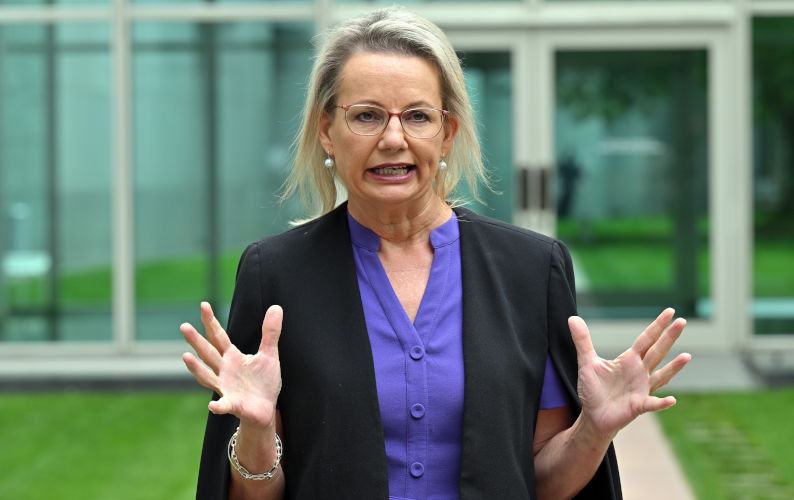Ley’s impossible task – Leading a party at war with its future
May 28, 2025
The future of the centre-right in Australia may depend on whether Sussan Ley can weather the current storm.
The Liberal Party’s historic loss in the 2025 federal election marked a seismic shift in Australia’s political landscape. Much of the blame can be traced to the Coalition’s increasingly hardline stance, a movement toward ideological conservatism that echoed US Republicanism and, in the eyes of many, made the party appear as ‘Trump-lite’. Emboldened by right-wing think-tanks and sympathetic media outlets, Coalition figures pushed policies such as big tax cuts for the wealthy, cuts to the public service and the endorsement of nuclear energy, an agenda that paralleled the post-2016 Republican platform.
Initially, this agenda appeared to energise the conservative base. But as Donald Trump’s legal troubles, autocratic behaviour and policy failures dominated international headlines, this alignment became politically toxic. Canada’s Conservative Party experienced a similar backlash when it leaned into Trumpian populism alienating moderates and suburban voters. In Australia, the results were devastating: the Coalition was abandoned by urban electorates and key demographics, particularly women and younger voters.
Now tasked with rebuilding from the ruins, newly elected Liberal leader Sussan Ley faces a party deeply divided. Her leadership contrasts sharply with that of her rival, Angus Taylor, a prominent figure of the party’s right.
Both leaders bring baggage. Ley’s past scandal involved the misuse of travel entitlements in 2016, which led to her resignation from Cabinet. She purchased an investment property during a taxpayer-funded trip. However, she took responsibility and gradually rebuilt her reputation through ministerial service and community engagement. Taylor’s controversies have been more numerous and persistent. From the forged document affair targeting Clover Moore, to the controversial water buyback deal (dubbed “Watergate”), and misleading emissions data, Taylor has been repeatedly accused of evasion, poor ethics and policy manipulation, without ever being held accountable.
Ley’s leadership win was narrow, and her mandate fragile. She now faces entrenched resistance from the party’s conservative wing. The recent split with the Nationals, who have doubled down on rural populism and pro-mining, anti-renewables rhetoric, is not just a Coalition issue. It signals open hostility toward Ley’s attempts to modernise and position the party towards the centre. [The two parties are now attempting to make up.]
Ley’s struggle is compounded by the gendered internal criticism she faces. Her attempt to introduce gender equity initiatives and climate pragmatism has been met with quiet sabotage and public sniping from senior conservative figures. This misogynistic undercurrent echoes the treatment of other female leaders, where competence is undermined by innuendo and ideological purging.
Recent editorials in The Australian and commentary on Sky News have framed Ley as “weak”, “disloyal to the party’s base”, and even “unelectable” despite her appeal to the voters the Liberals desperately need to win back. Meanwhile, conservative media figures and political donors, including Clive Palmer, Gina Rinehart, and outlets aligned with Rupert Murdoch, continue to push for a return to populist conservatism, undermining any attempt to reposition the party.
Ley also inherits a political map redrawn by the Teal independents, who have seized the socially progressive, fiscally responsible territory once occupied by the Liberal “wets”. Seats like Wentworth, Kooyong and North Sydney, formerly held by moderate Liberals and even prime ministers, are now in Teal hands. These electorates demand climate leadership, political integrity and gender equity; values Ley supports but struggles to advance in a party beholden to hardliners.
The challenge is near-impossible: she must rebuild urban and female voter confidence while fending off internal revolts, public right-wing hostility, and co-ordinated donor/media opposition.
Ley is in an unenviable position, caught between a party dominated by conservative resistance and a national electorate demanding modern, inclusive and moderate leadership. Her efforts to reclaim the centre face relentless opposition not just from political rivals, but from powerful figures in the media and donor class who are invested in maintaining ideological control.
If she fails to shift the party, it risks further erosion, not only in votes, but in relevance. The future of the centre-right in Australia may depend on whether Ley can weather this storm or whether the Teals will permanently occupy the political ground the Liberals once called home.
The views expressed in this article may or may not reflect those of Pearls and Irritations.

